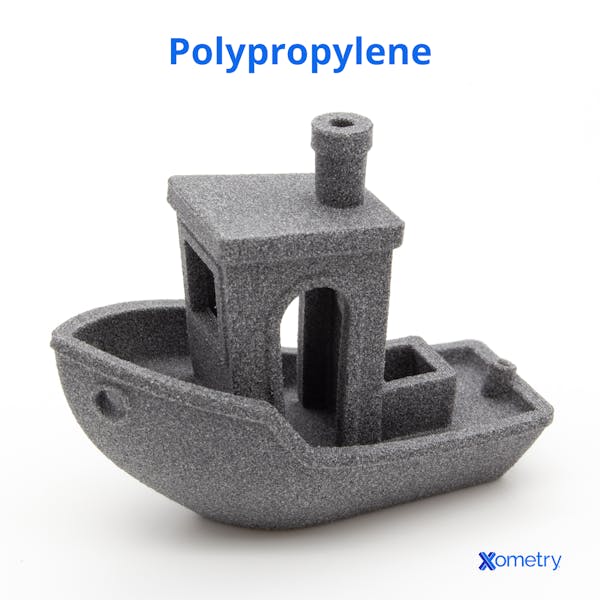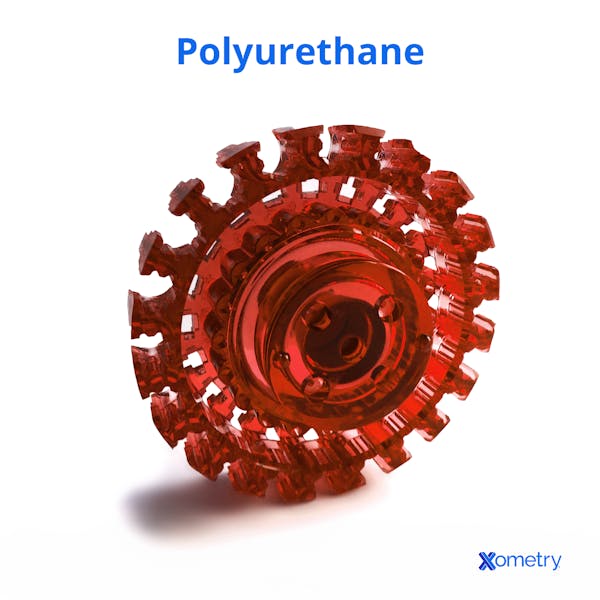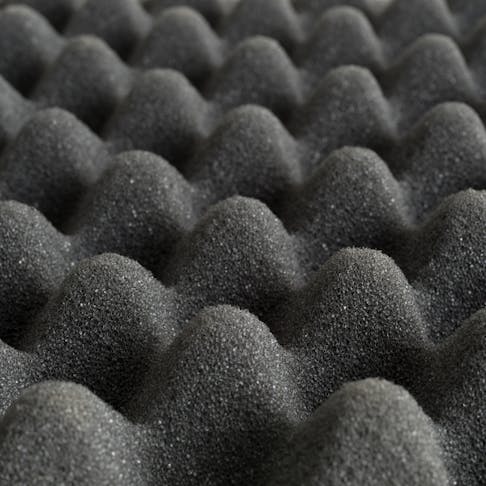Polypropylene and polyurethane serve many of the same purposes. However, each presents its own trade-offs. Polypropylene is created through the polymerization of propylene monomers while polyurethane is produced by reacting a diisocyanate with a polyol. Polyurethane is subdivided into two types: thermosetting and thermoplastic polyurethane.
Polypropylene (which is appropriate for injection molding and thermoforming) and polyurethane (good for reaction injection molding, casting, and extrusion blow molding) have many similar applications. They are used in the production of bottles, toys, wire insulation, etc. This article will further discuss and compare the physical properties, applications, and cost of polypropylene vs. polyurethane.
What is Polypropylene?
Polypropylene is a thermoplastic that is manufactured through the polymerization or combination of propylene monomers. It is a worthy replacement material for common conventional plastic products and finds relevance in many industrial processes. Polypropylene comes in handy in the production of belt covers, living hinges, textiles, container lids, and buffers, to name a few. For more information, see our guide on What are Polypropylene Plastics.
Figure 1 is an example of Polypropylene:

Additionally, polypropylene resists certain solvents, both acid, and base. For this reason, its products can be used as containers for slightly acidic solutions. Among its physical properties are high strength, good fatigue resistance, and resilience in moist environments. Relevant manufacturing processes include injection molding and thermoforming.
What is Polyurethane?
Polyurethane comes in both thermoset and thermoplastic forms. Both are created in chemical reactions that take place between diisocyanate and polyol. The thermoset variety should not be confused with a thermoplastic. Though both of them are polymers, they do not behave the same way when exposed to heat. Unlike thermoplastics, thermosetting materials cannot be melted or remolded. Any attempt to reheat a thermoset item will only char it. However, this is not always a disadvantage because, in high-temperature applications, thermoset polyurethane is more capable than polypropylene. Figure 2 is an example of polyurethane:

Polyurethane offers flexibility in design. It can be tailored to make the surface as soft as foam or as rigid as metal. Polyurethane can be used to manufacture a lot of parts including: cushioning for furniture, shoe soles, car parts, insulation for refrigerators, rollers, and sportswear. Water, grease, and oil do not affect the stability of polyurethane. Moreover, it bonds well with other materials such as wood, metals, and other plastics. The adaptability and design flexibility of polyurethanes make them convenient for manufacturing processes such as reaction injection molding (RIM), casting, thermoforming, and extrusion blow molding.
Polypropylene vs. Polyurethane: Applications and Uses
When it comes to applications, polypropylene and polyurethane offer many similar benefits. They are used for packaging food and drinks. Both can also be used to make toys, clothing, and other household items. Polyurethane is very common as insulation or soundproofing in buildings. It can also be employed as a coating on other materials to protect them from moisture or UV rays.
Polypropylene vs. Polyurethane: Physical Properties
Table 1 below highlights the chemical properties of polypropylene vs. polyurethane:
| Physical Properties | Polypropylene | Polyurethane |
|---|---|---|
Physical Properties Chemical resistance | Polypropylene High chemical resistance | Polyurethane High chemical resistance |
Physical Properties Tensile strength | Polypropylene 4,800 psi | Polyurethane 200-800 psi |
Physical Properties Density | Polypropylene 0.90-0.92 g/cm3 | Polyurethane 0.05 - 1.7 g/cm3 |
Physical Properties Impact tolerance | Polypropylene Good impact tolerance or resistance | Polyurethane Good impact tolerance or resistance |
Physical Properties Water absorption | Polypropylene Resistant to absorbing water or moisture | Polyurethane Resistant to absorbing water or moisture |
Physical Properties Surface hardness | Polypropylene 74-76 on the shore D hardness scale | Polyurethane It has a wide range of 55 shore A to 75 shore D hardness scale |
Physical Properties Operating temperature | Polypropylene 180°F (82.2°C) | Polyurethane -80°F to 200°F (-62°C to 93°C) Polyurethane performance can be extended to temperatures upwards of 300°C (150°C) with certain formulations |
Physical Properties Melting temperature | Polypropylene 160 °C | Polyurethane Thermoplastic polyurethane has a melting point of 163°C. Thermosetting polyurethane either combust or loses its valuable properties when overheated. |
Polypropylene vs. Polyurethane: Recyclability and Sustainability
Polypropylene is recyclable but is not so sustainable. It is an environmentally friendly option that offers a lot of benefits compared to other materials. Polypropylene, unlike polycarbonate, does not significantly affect the health of humans. As a result of its tolerance to heat and the fact that it does not leach chemicals into food, it is used as packaging in many food and beverage industries. However, it has a drawback. When it is heated to very high temperatures it can cause a medical condition called occupational asthma.
Polypropylene, according to a trade publication for the clean technology industry called AZoCleantech, can pass through a recycling process four times. On the other hand, polyurethanes are less environmentally problematic because they use less energy to produce. Some versions are also biodegradable. Thermoplastic polyurethane is recyclable while thermosetting polyurethane is not.
Polypropylene vs. Polyurethane: Cost
The cost of polypropylene is somewhere between $0.55-0.89 per kilogram while thermosetting polyurethane and thermoplastic polyurethane cost about $6.10 and $5.50 per kilogram, respectively.
Alternative Materials to Polypropylene and Polyurethane
Polyethylene, an alternative material to polypropylene and polyurethane, is a synthetic resin that is made by polymerizing ethylene molecules. It is among the most popular consumer plastics. Polyurethane is a thermoplastic material, meaning that when heat is applied, it liquefies and exhibits identical properties after cooling and resolidifying. Polyethylene products can be recycled many times before the material becomes useless. Some uses of polyethylene include but are not limited to grocery bags, bottles, food and drink packaging, and wire and cable insulation.
Summary
This article presented polypropylene and polyurethane, explained what they are, and discussed the applications and properties of each material. To learn more about polypropylene and polyurethane, contact a Xometry representative.
Xometry provides a wide range of manufacturing capabilities and other value-added services for all of your prototyping and production needs. Visit our website to learn more or to request a free, no-obligation quote.
Disclaimer
The content appearing on this webpage is for informational purposes only. Xometry makes no representation or warranty of any kind, be it expressed or implied, as to the accuracy, completeness, or validity of the information. Any performance parameters, geometric tolerances, specific design features, quality and types of materials, or processes should not be inferred to represent what will be delivered by third-party suppliers or manufacturers through Xometry’s network. Buyers seeking quotes for parts are responsible for defining the specific requirements for those parts. Please refer to our terms and conditions for more information.

